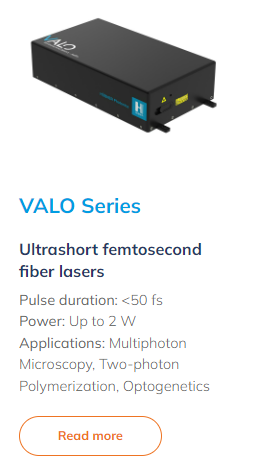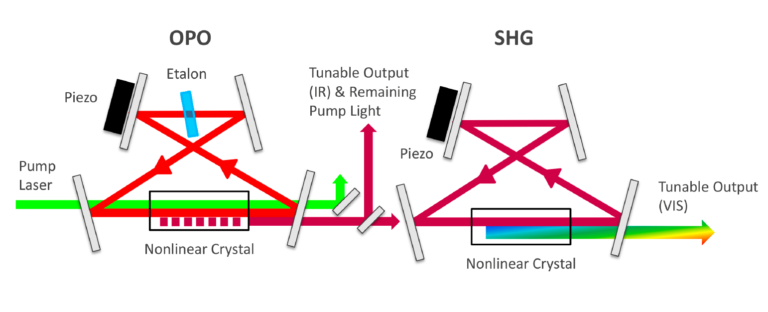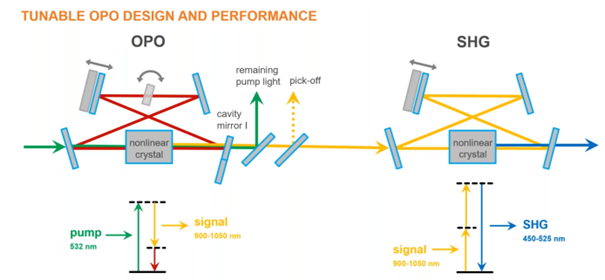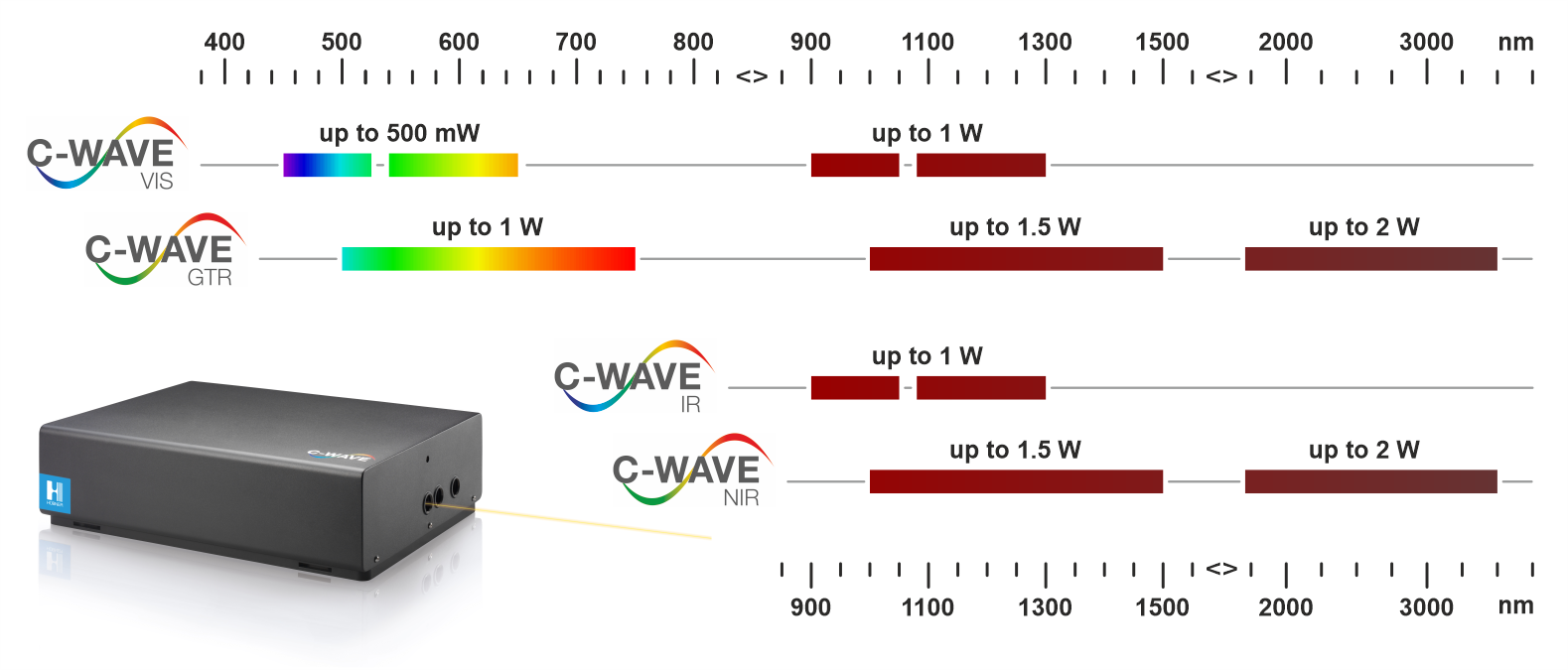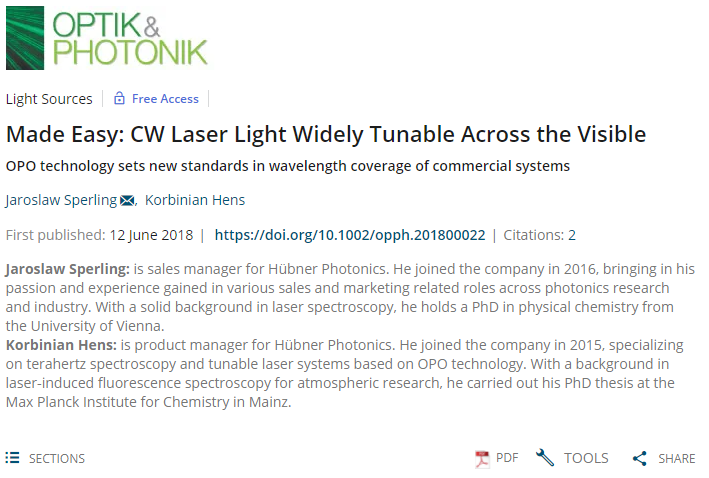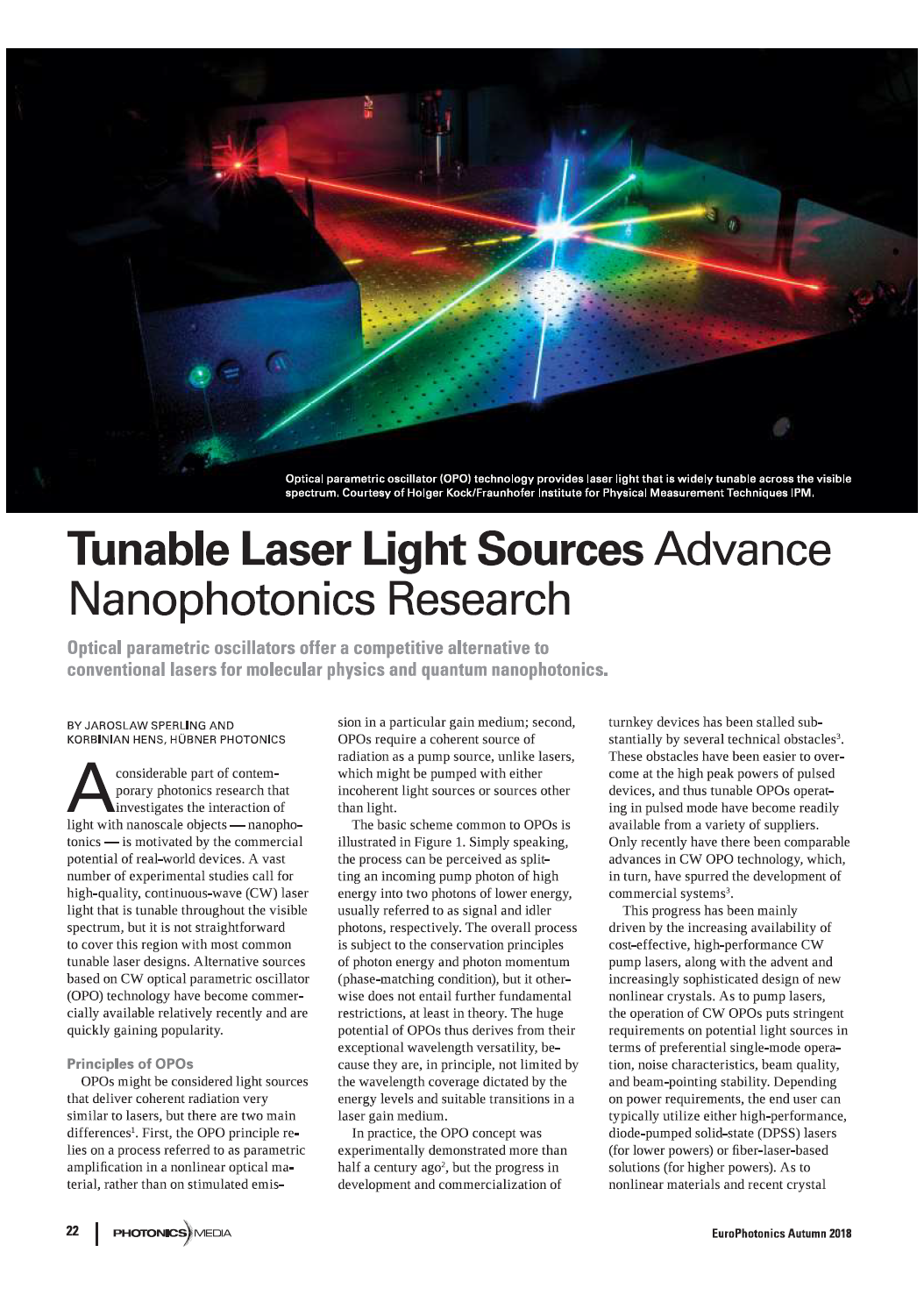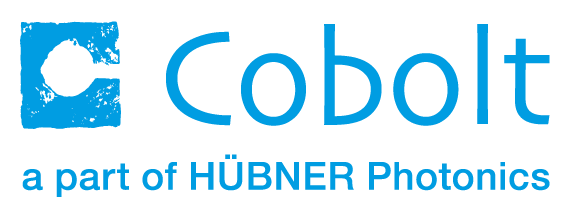Ultrafast femtosecond fiber lasers
Advantages of ultrashort pulse durations
Ultrafast fiber lasers have revolutionized the field of photonics, offering a range of advantages over traditional lasers. One of the main advantages of using ultrafast femtosecond fiber lasers is the high peak power that they offer, which is a result of their ultra-short pulse duration. This high peak power makes these lasers ideal for a wide range of applications, including precision micromachining, medical procedures, and especially biomedical imaging.
In addition, fiber lasers in general offer a lot of advantages compared to solid state lasers. Due to the waveguide effect of optical fibers the laser systems have very good thermal and vibrational stability and can produce nearly diffraction limited beam profiles. In general fiber lasers offer a low cost of ownership and they are essentially maintenance free so the combination of achieving ultrafast femtosecond pulse durations in fiber lasers mean that they are very attractive for a wide range of applications.
In conclusion, ultrafast fiber lasers, and especially those lasers with sub 50 fs pulse durations, offer a range of advantages over traditional lasers, making them ideal many applications. With their high peak power, ease of use and maintance free operation, femtosecond fiber lasers are poised to revolutionize the field of photonics and have the potential to impact a wide range of industries and disciplines.
Learn more about the range of ultrafast femtosecond fiber lasers from HÜBNER Photonics. With outstandingly high pulse peak power levels and computer controlled group velocity dispersion pre-compensation, the VALO femtosecond fiber lasers are ideal for multiphoton imaging, neuroscience, optogenetics and advanced spectroscopy applications.


